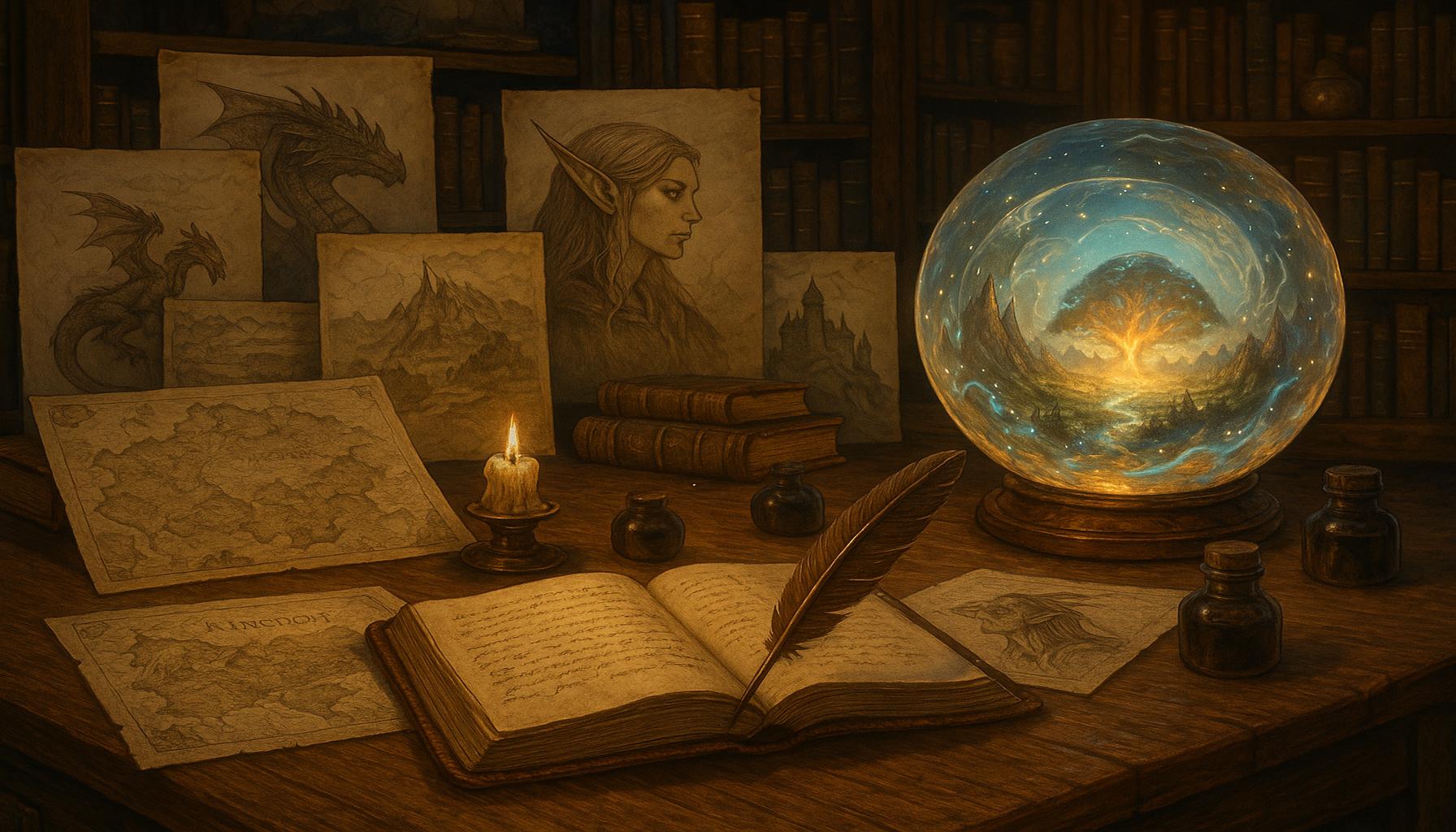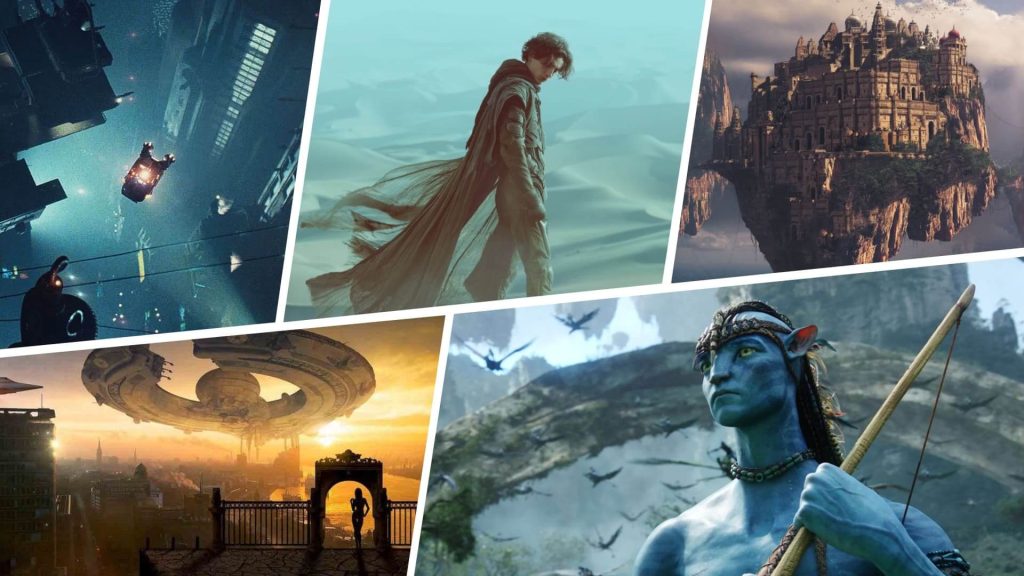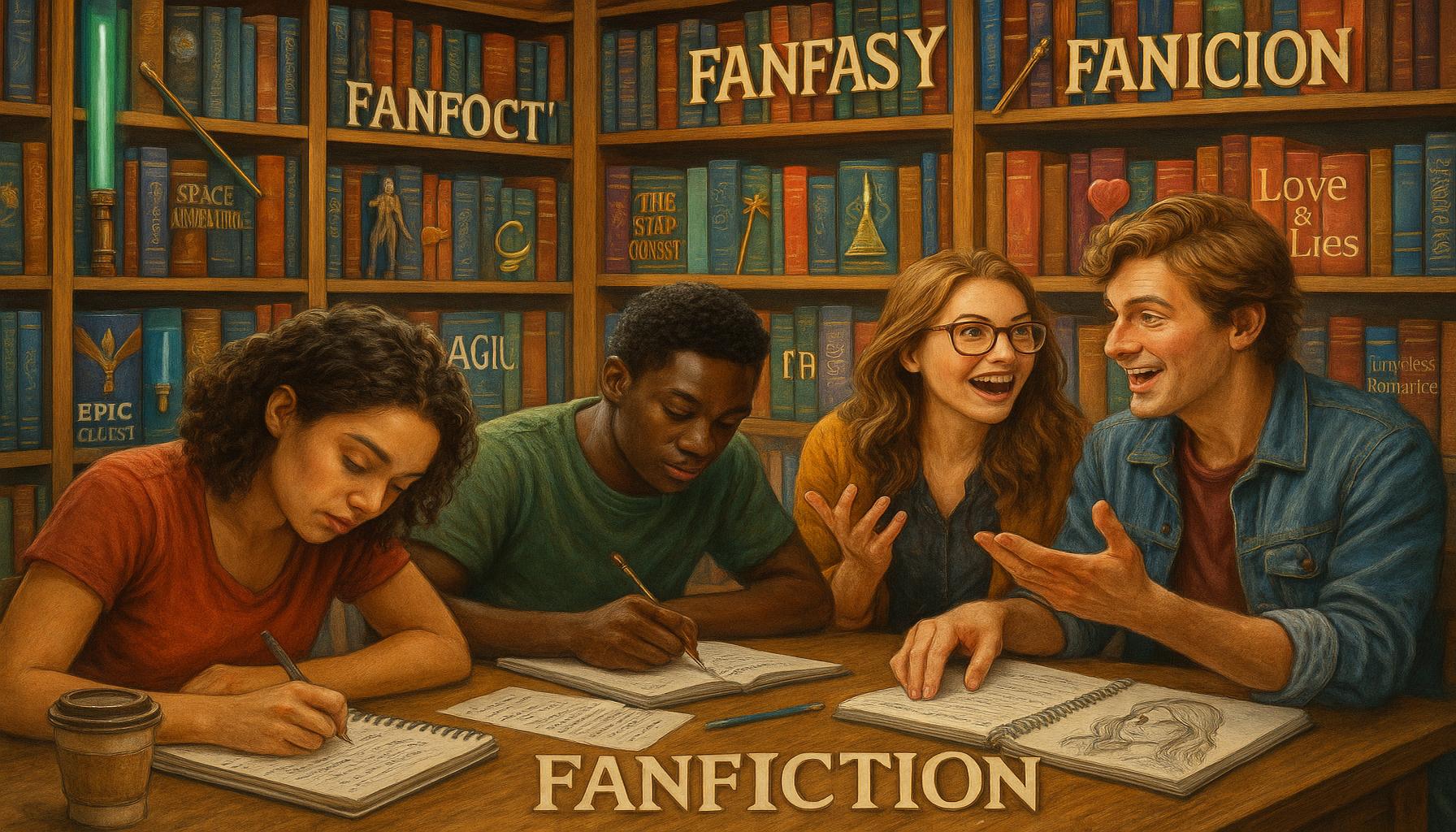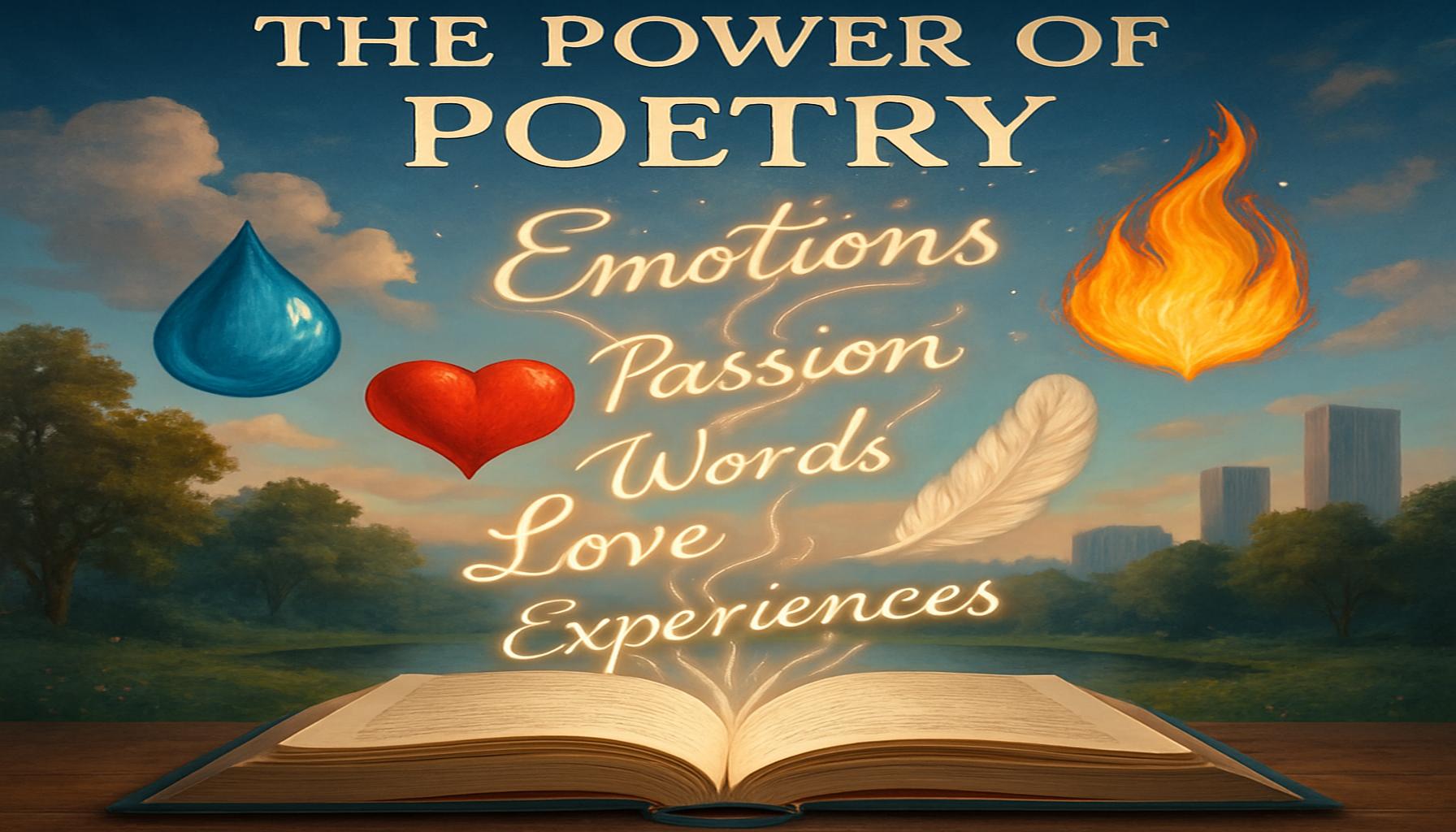Creating Worlds: The Construction of Fictional Universes in Fantasy Writing

Understanding the Craft of Fantasy World-Building
Every great fantasy story begins with a world that captivates the imagination. From the sweeping landscapes of Middle-earth to the intricate politics of Westeros, these fictional universes serve as backdrops for epic narratives. The elaborate details resonate not only with the plot but also with the emotional arcs of the characters who inhabit these realms.
But what exactly goes into the creation of these vibrant worlds? Writers employ a mix of foundational elements that contribute to the depth and richness of their stories:
- Geography: Mapping out mountains, rivers, and cities is crucial. A well-designed landscape can inform the behaviors and cultures of its inhabitants. For example, a society living in mountainous regions may have developed unique climbing skills and a reliance on trade with lower plains, resulting in distinct customs and dialects.
- History: Crafting rich backstories that influence the present enables readers to understand the motivations and conflicts that shape character interactions. In J.K. Rowling’s Harry Potter series, the history of the Wizarding World, including the events leading to the rise of Voldemort, adds layers to the saga that engage readers deeply.
- Mythology: Developing legends and belief systems unique to the universe enhances the narrative’s allure. For instance, the pantheon of gods and creation myths in Tolkien’s works provide not only context but also a spiritual dimension that influences the characters’ decisions and moral dilemmas.
- Culture: Defining the customs, languages, and societal structures of various races creates a diverse tapestry that draws the reader in. The various cultures in George R.R. Martin’s Game of Thrones series, including the nomadic Dothraki and the honor-bound Stark family, showcase the complexity of human interaction within these fantastical worlds.
The construction of a fictional universe is not merely a backdrop; it is a living, breathing entity that enhances the character’s journey. Authors like J.K. Rowling and Tolkien showcase their mastery of this art, weaving complex details into their narratives, making their worlds feel as tangible and dynamic as our own.
In the upcoming sections, we will explore the techniques that make world-building essential in fantasy writing. Dive into the creative process that shapes these incredible realms and discover how they make stories resonate with readers around the globe. World-building is not just an art; it’s a gateway to exploring human nature, societal structures, and the very essence of storytelling itself. Unpacking these elements encourages both writers and readers alike to engage in deeper exploration of the worlds crafted by some of the most imaginative minds in literature.
DIVE DEEPER: Click here to uncover the therapeutic benefits of creative writing

The Building Blocks of Fantasy Worlds
Creating a mesmerizing fantasy universe is an intricate process that goes beyond mere imagination. It involves a meticulous blend of elements that together craft a resonant and immersive experience for the reader. As aspiring writers embark on their journey of world-building, understanding these critical components can significantly enhance their narratives.
Geographical Features
The geography of a fictional world often serves as the foundation upon which stories are built. It encompasses not just the terrain but also the climate, flora, and fauna of the land. Diverse geographical features can dictate the lifestyle and culture of inhabitants. For example, a coastal region may foster a society skilled in fishing and shipbuilding, while an arid desert might give rise to nomadic tribes adept at surviving harsh conditions. In the acclaimed Earthsea series by Ursula K. Le Guin, the islands and oceans are meticulously described, shaping the identity and journeys of the characters.
Historical Context
A robust historical framework enriches a fictional universe, offering context and justification for current events and societal norms. Engaging readers with tales of ancient wars, treaties, and prophetic legends draws them deeper into the fabric of the story. The elaborate history of Hogwarts in the Harry Potter series, including the founding of the school and its subsequent evolution, intrigues fans and provides pivotal insights into character motivations and plot developments.
Social Structures and Culture
The intricacies of social hierarchies and cultural practices breathe life into fantasy worlds. By developing distinct customs, rituals, and social norms, writers can portray depth and complexity. This can be achieved through:
- Language: Crafting unique languages or dialects enhances world-building by adding authenticity. For instance, Tolkien’s Elvish languages not only enrich the story but also showcase the history of its people.
- Traditions: Integrating festivals, rites of passage, or seasonal events can provide insights into the values and beliefs of a culture. In Martin’s series, the Stark family’s commitment to the ancient traditions of their house exemplifies their deep-rooted values.
- Economy and Technology: Establishing the basis for trade, resources, and technological advancements influences how societies interact. The varying levels of technological development between the different regions in Game of Thrones affect political power and conflict dynamics.
As we delve deeper into the art of world-building, it becomes clear that these elements not only create a captivating setting but also enhance character development and plot dynamics. By intertwining geography, history, and cultural nuances, writers forge worlds that resonate long after the last page is turned. The implications of effectively constructed fictional universes extend beyond storytelling; they invite readers to reflect on their own experiences and societies, making fantasy a powerful medium for exploration and understanding.
| Aspect | Importance |
|---|---|
| World-Building | Enhances immersion for readers, creating a livelier experience. |
| Cultural Depth | Incorporates social structures and beliefs that resonate with real-world themes. |
To truly captivate an audience, authors must understand the nuances of world-building. This foundational aspect of fantasy writing goes beyond merely describing landscapes; it’s about crafting entire ecosystems and societies that function with their own set of rules. The intricately designed world serves as a character in itself, influencing plot developments and the journeys of its inhabitants.An effective approach to creating worlds involves the introduction of varied cultural elements. By establishing unique traditions, languages, and philosophies, writers mirror the diversity found in our own world, allowing readers to engage on a deeper emotional level. Cultural depth not only enriches storytelling but also creates opportunities for readers to draw parallels with contemporary issues, inspiring them to contemplate broader themes of society and identity.Through thoughtful world-building and cultural richness, fantasy authors can tap into readers’ imaginations, paving the way for unforgettable narratives that resonate long after the final page is turned.
DIVE DEEPER: Click here to discover your unique writing voice
Crafting the Details of Fantasy Universes
Beyond geography, history, and culture, the depth of a fantasy world lies in its details. These details—often subtle yet significant—can elevate a story from a simple narrative to an unforgettable adventure. Aspiring writers should consider the following aspects as they build their fictional universes.
Magic Systems
One of the hallmarks of fantasy writing is the inclusion of magic, which can serve as both a plot device and a means of enriching the world. A well-defined magic system establishes rules that govern its use, which can influence character development and plot progression. For example, in Brandon Sanderson’s works, such as the Mistborn series, the intricate rules of Allomancy—where characters derive powers from the ingestion of metals—create not only unique abilities but also limitations that drive the narrative. Writers should consider the source of magic (is it innate, learned, or bestowed?) and how its presence shapes societal dynamics, conflicts, and hierarchies.
Religion and Mythology
The incorporation of religion and mythology adds another layer of richness, allowing writers to explore themes of faith, morality, and the human experience through a fantastical lens. The gods and deities worshipped in a fictional universe can influence political structures and societal customs. In Neil Gaiman’s American Gods, the clash between old gods and new deities reflects the evolving nature of belief systems in America. Writers are encouraged to create mythologies that explore the origins of their worlds or provide moral lessons, offering readers a glimpse into the collective consciousness of fictional societies.
Creatures and Races
Fantasy universes are seldom complete without a diverse array of creatures and races. From dragons and elves to entirely original beings, these entities contribute to both the setting and the plot. Their characteristics, societal roles, and relationships with humanity dictate the dynamics within the story. In J.R.R. Tolkien’s works, the various races, such as Hobbits, Dwarves, and Elves, not only serve as pivotal protagonists but also illustrate the complexities of alliance and conflict among different species. Crafting detailed backgrounds for these races, including strengths, weaknesses, and cultural beliefs, adds authenticity and invites readers to explore the intricacies of coexistence.
Political Dynamics
The political landscape of a fictional universe can dramatically affect character motivations and plot trajectories. Struggles for power, diplomatic relations, and social revolutions can mirror real-world issues, providing commentary on governance and ethics. In George R.R. Martin’s Game of Thrones, shifting power dynamics among noble families drive much of the conflict, underscoring themes of loyalty, betrayal, and ambition. Writers should consider how political systems—be they monarchies, democracies, or federations—impact the structures of their stories and influence character choices.
As these elements interweave, they create a complex tapestry that immerses readers wholly in the fictional universe. Through careful attention to magical systems, religion, diverse creatures, and political intrigue, writers can build worlds that are not just settings but vibrant living entities that enhance storytelling and invite exploration.
EXPLORE MORE: Click here to unleash your creativity
Conclusion
In the realm of fantasy writing, the art of crafting worlds is akin to breathing life into a blank canvas, transforming mere words into immersive experience. The intricate interplay of geography, culture, magic systems, and political dynamics creates a vibrant backdrop for narratives that can take readers far beyond the confines of reality. As writers navigate the complexities of fictional universes, understanding the profound influence of elements such as religion and mythology, and the construction of diverse creatures and races is essential in enriching the storytelling fabric. Readers are invited to not just view but live within these worlds, exploring the moral quandaries, emotional depths, and social constructs that reflect both fantastical and real human experiences.
Furthermore, as our literary landscapes evolve, so too should our approaches to world-building. Today’s writers are encouraged to innovate and draw inspiration from contemporary issues, weaving them into the very fabric of their narratives. By doing so, fantasy universes can resonate with readers on a deeper emotional level, transporting them to places that speak to current realities while offering an escape into the extraordinary. This delicate balance of creativity and reflection is what makes the journey through a fantasy world not only a remarkable adventure but also a means of understanding the intricacies of our own society.
As aspiring authors embark on their world-building endeavors, they should embrace the complexities involved, remain curious, and never hesitate to explore the untold stories that lie just beyond the horizon of imagination. With every new world constructed, the potential for discovery and connection awaits—inviting readers to step inside and lose themselves in the magic of storytelling.


